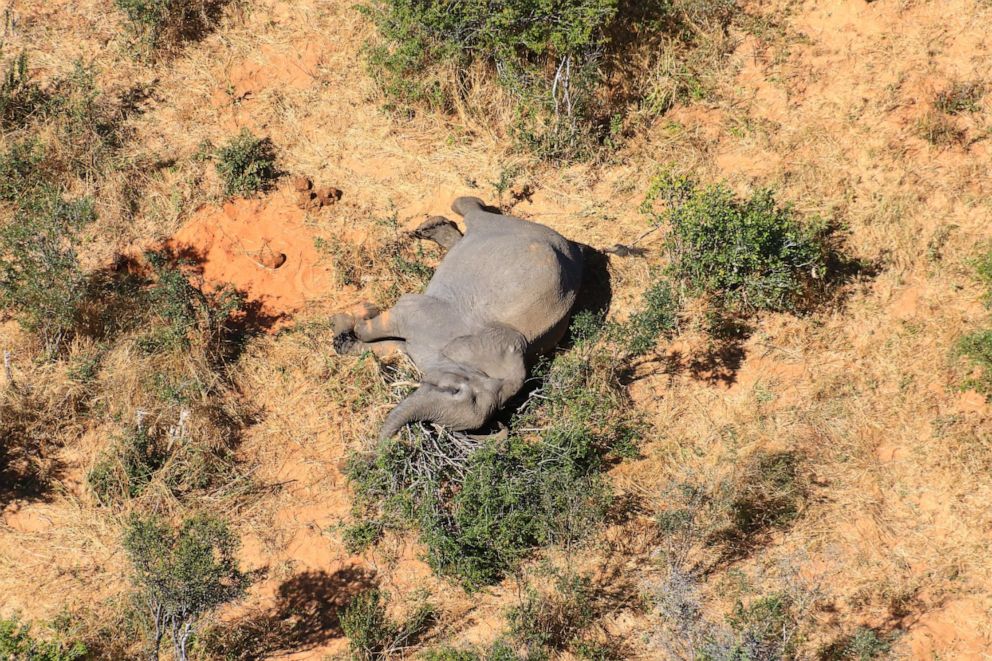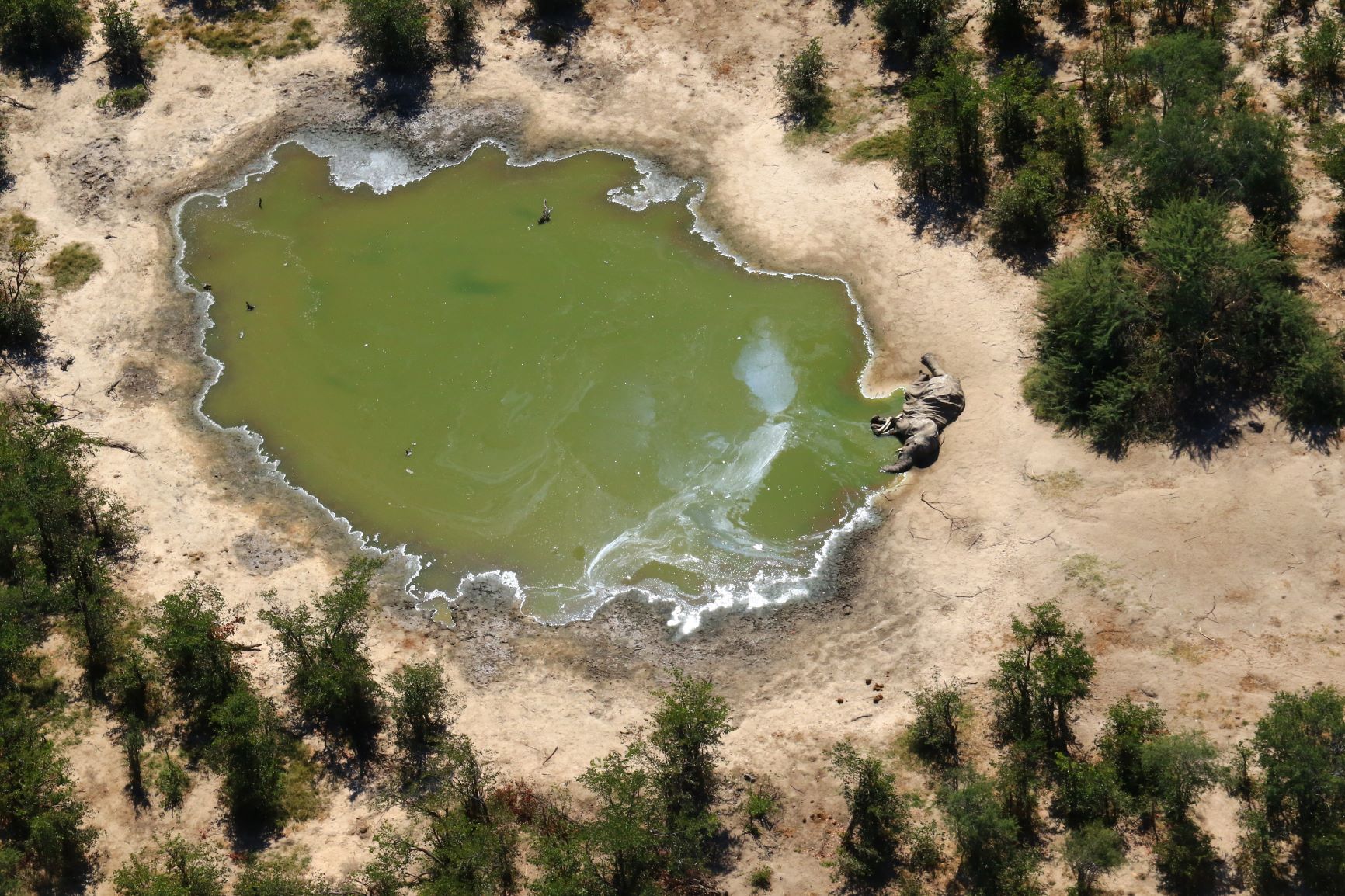Over 330 elephants suddenly collapsed and died. Scientists now have an explanation
A deadly neurotoxin and climate change are suspected of playing a role.
The mystery surrounding hundreds of sudden elephant deaths in Botswana seems to have been solved and the findings bring an end to months of speculation on why at least 330 elephants were found dead in the northwestern region of the Southern African country earlier this year.
Initially, possible explanations over the deaths had ranged from poaching to anthrax to poisoning. Now, however, the country has pointed to toxic blooms of cyanobacteria, a naturally occurring neurotoxin and biological phenomenon which has increased due to climate change, according to Mmadi Reuben, principal veterinary officer at the Botswana department of wildlife and national parks.
“As in so many other situations, such as the wildfires in California and Oregon and the floods in the U.K., climate change is the threat multiplier,” Dr Niall McCann, co-founder of U.K.-based charity National Park Rescue, told ABC News. “Climate change and the effect of global warming on the region is increasing both the intensity and severity of harmful algal blooms, making this issue more likely to reoccur.”

“Our latest tests have detected cyanobacterial neurotoxins to be the cause of deaths. These are anaerobe bacteria found in water of seasonal water pans” Mmadi Reuben told ABC News by phone from Gaborone, the country’s capital.
They spent months studying samples from the carcasses, environmental samples from soil and water as well as samples from the live animals and sent them to specialized regional laboratories as well as laboratories in the U.S., Canada and Europe, according to Reuben.
Most carcasses, spotted by aerial surveys, were found clustered around water sources close to the Okavango Delta which, in normal times, is a major tourist safari destination. Some animals were even seen walking dizzily in circles before suddenly dying.
“The unexplained deaths ceased as these seasonal waterholes and water pans dried up in late June, the beginning of our fall,” Reuben explained. “We have a number of hypotheses we are investigating.”
With the exception of one horse, other animal species were not affected by the blue-green algae phenomenon.
“One working hypothesis is that, unlike other animals, elephants suck water with their trunks from underneath, so they drink from deeper levels in the waterholes, closer to silt where the anaerobe toxins are contained,” Reuben explained.
Although there are no official indications that the Botswana elephant deaths might be linked to the unresolved deaths of more than 20 elephants near Hwange, a national park in neighboring Zimbabwe, in August, McCann believes a common denominator is climate change.

“Climate change is the ultimate cause, even if the proximate cause is something different,” claims McCann. “These type of things are only going to become more common, more frequent and the issue of warming waterholes is going to become worse and worse in time.”
Because of climate change, Southern Africa’s temperatures are rising at twice the global average, according to CSAG, one of the leading climate research groups in Africa.
Botswana is home to about 130.000 elephants -- the world's largest elephant population -- with more than a third of Africa's elephants, according to the latest Great Elephant Census, which Reuben's colleagues at the Department for Wildlife and Natural Parks helped produce. It is also one of the most stable countries in Africa with one of the best wildlife records. Tourism accounts for a fifth of Botswana's GDP.
“The important thing is that investigations continue into why this happened so that going forward we can stop this from happening again in time,” concluded Reuben. “The country is already engaged in development of monitoring plan aimed at detecting the blooms early in the water before they cause harm to the animals and taking necessary precautions,”







